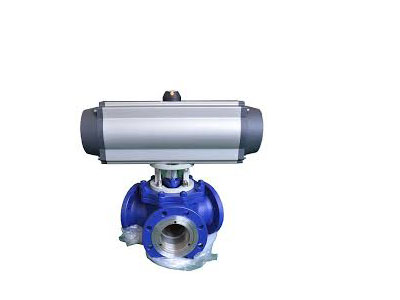Key Takeaway
The three main types of flow control are manual flow control, automatic flow control, and proportional flow control. Manual flow control involves adjusting the flow rate using a hand-operated valve or lever.
Automatic flow control uses sensors and actuators to regulate the flow rate based on system demands. Proportional flow control provides precise and consistent flow regulation by adjusting the flow rate in proportion to the control signal, making it ideal for complex systems requiring continuous monitoring and adjustment.
Overview of Flow Control Types
Flow control types include manual flow control, automatic flow control, and proportional flow control. Manual flow control involves adjusting the flow rate using a hand-operated valve or lever.
Automatic flow control uses sensors and actuators to regulate the flow rate based on system demands, providing precise and consistent flow regulation.
Proportional flow control offers variable flow rates, making it ideal for applications requiring precise flow modulation. Understanding these types is crucial for selecting the right flow control method for specific needs.

Key Differences Between Types
Flow control valves (FCs) differ significantly from other valve types like pressure relief and check valves. FCs primarily focus on regulating flow rates to maintain a steady supply, making them ideal for irrigation and HVAC systems.
In contrast, pressure relief valves prioritize system protection by releasing excess pressure, while check valves ensure unidirectional flow to prevent backflow. These valves serve different operational goals, often complementing FCs in complex systems.
Additionally, FCs are simpler in design compared to fully automated control valves, which manage multiple parameters, including pressure and temperature. This simplicity makes FCs more cost-effective and easier to maintain.
You May Like to Read
Applications for Each Type
Flow control valves (FC) come in different types, each suited for specific tasks. Needle valves, globe valves, and ball valves are among the most commonly used types.
Needle Valves are ideal for fine-tuned control, typically used in systems that require precise flow adjustments, such as laboratory or fuel systems.
Globe Valves are well-suited for throttling applications where a high degree of flow control is necessary, like steam systems or high-pressure water systems.
Ball Valves are used where on/off control is needed with minimal flow regulation, such as in oil pipelines or water treatment plants.
Each type of flow control valve is selected based on the nature of the application, whether fine control, high capacity, or simple on/off regulation is required.
Advantages and Disadvantages
Flow control valves (FCVs) offer several advantages when used in various industries. One of the primary benefits is their ability to regulate and control the flow of fluids with great precision, ensuring that systems operate efficiently and safely. By adjusting the flow rate, FCVs help to maintain stable system pressures, reduce energy consumption, and prevent system damage due to over-pressurization. Their versatility is another advantage, as they can be used in a wide range of applications across industries like oil and gas, water treatment, HVAC, and manufacturing, offering flexible control over diverse fluid types and flow rates.
However, despite their many advantages, FCVs also come with a few disadvantages. One notable downside is that they may introduce flow restrictions, which can lead to pressure drops, especially in high-flow applications. This could result in the need for additional equipment to compensate for the loss in pressure or flow, potentially increasing the overall system cost. Moreover, regular maintenance is essential to ensure that the valve operates effectively, as dirt, corrosion, or wear on internal components can affect its performance. Additionally, improper selection or sizing of the valve can lead to inefficient operation, causing more frequent maintenance and potential system failure.
Despite these challenges, the advantages of FCVs in terms of energy savings, system protection, and flexibility often outweigh the disadvantages, provided they are selected, installed, and maintained correctly. To maximize their benefits, engineers must carefully evaluate the system’s needs and ensure that the FCVs are appropriately sized and maintained.
Choosing the Right Flow Control Type
Selecting the right flow control type is essential for optimizing system performance and ensuring smooth operations. There are several flow control options available, including on/off, throttling, and proportional control valves, each suited for different applications. On/off valves are ideal for simple applications where precise flow regulation is not necessary, whereas throttling valves allow for adjustable control of flow rates, making them suitable for more dynamic systems.
Proportional control valves offer the highest precision, automatically adjusting flow rates based on system feedback. These valves are perfect for systems where continuous flow adjustments are necessary to maintain optimal performance, such as in industrial processes or HVAC systems. The ability to fine-tune flow rates helps prevent system imbalances and ensures efficient operation.
When choosing a flow control type, consider factors like fluid characteristics (corrosiveness, viscosity), required flow rates, pressure conditions, and system automation needs. Proper valve selection not only enhances system efficiency but also minimizes wear and maintenance, ensuring long-term reliability and cost savings.
Conclusion
The three main types of flow control are manual flow control, automatic flow control, and proportional flow control. Manual flow control involves adjusting the flow rate using a hand-operated valve or lever.
Automatic flow control uses sensors and actuators to regulate the flow rate based on system demands, providing precise and consistent flow regulation. Proportional flow control offers variable flow rates, making it ideal for applications requiring precise flow modulation.
